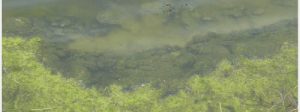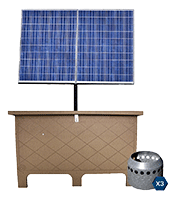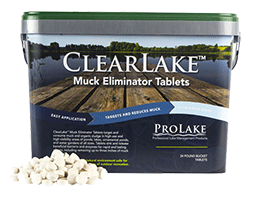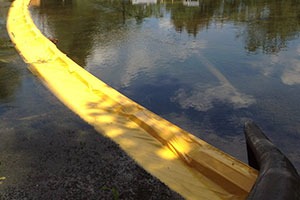How can you tell if a lagoon or pond has a sludge problem?
If a pond’s sludge has never been addressed before and odor is present, chances are there is too much sludge on the bottom. Aside from more visible sludge on the bottom of the lagoon, there are a few ways to find out if there is a large accumulation on the bottom.
Odors
Gasses released from anaerobic digestion will increase as a sludge blanket thickens. The more sludge you have, the more odor is produced. If you have noticed increasing odors over the years, this could be a sign.
Floating Sludge
As gasses are released from anaerobic digestion in the sludge blanket, pieces of sludge will break loose and float to the surface. Once on the surface, this sludge will not have any water to cover it and will produce more odor.
Water Color
A wastewater lagoon or pond should be sparkling blue. Green or brown colors indicate low dissolved oxygen (DO) levels. Low DO levels can be due to an overloaded system. Algae growth is another sign. A thick sludge blanket can cause an overloaded condition because it will decrease the hydraulic capacity of a lagoon or pond. If a pond is designed to be 10 feet deep but has 1 foot of sludge on the bottom, 10% of the pond’s design hydraulic capacity is lost to the sludge. With less capacity, the pond is essentially smaller and cannot treat the same amount of wastewater it used to.
Measure with a sludge judge
A sludge judge is essentially a long pipe that is lowered into the water and pushed all the way to the bottom. As it passes through the sludge blanket, a core sample is taken and can be measured to determine the thickness of the sludge blanket.




